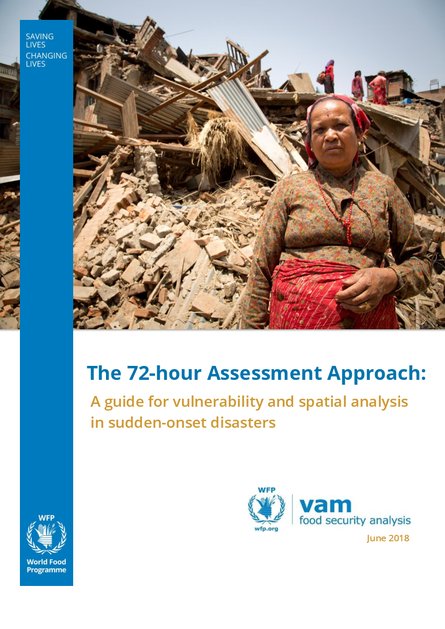
This document, 72-hour assessment approach: a guide for vulnerability and spatial analysis in sudden-onset disasters, was developed based on the experience of the VAM Units in WFP Regional Bureaux for Asia and the Pacific and Latin America and the Caribbean, who applied this approach in rapid emergency assessments between 2015-2017. It has benefited from peer review mechanisms with technical specialists from various HQ divisions and knowledge partners.
It is designed for professionals and organizations intending to carry out a rapid emergency assessment following a sudden-onset disaster, such as a cyclone, earthquake or flood. With a strong emphasis on data preparedness and other essential organizational readiness actions, the 72-hour assessment approach provides a good enough snapshot to fill the initial information vacuum in the first three days after the disaster, based on the most recent available information and pre-disaster secondary data.
It offers a solid basis to make operational decisions even in extremely challenging and complex situations with information being validated and refined through continuous updates as new data becomes available, from, e.g., field visits, rapid assessments, remote sensing and mobile phone surveys. The fine-tuning and updates of initial estimates are made over time and regularly communicated through sequential reports.
Partnerships with national and local government entities responsible for disaster management, UN agencies, I/NGOs, Red Cross Red Crescent national chapters, research institutions, and private sector organizations are critical throughout the 72-hour assessment process.